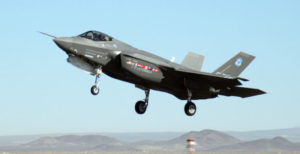U.S. military avionics software may get into the field faster and at less taxpayer cost with rigorous scrutiny from Vanderbilt University’s Institute for Software Integrated Systems.
The institute is the conformance authority for the Future Airborne Capability Environment (FACE) Consortium and will operate a registry of aviation software that can be used across military aircraft. Although each type of aircraft has unique software, portions can be written in a way that makes them portable for quicker deployment.
With the FACE registry, which is voluntary, providers no longer need to rebuild software for each platform.

“If you’re using navigation software, for instance, it is basically the same for an airplane, a helicopter or an unmanned aerial vehicle,” said James “Bubba” Davis, a Vanderbilt research scientist and vice chair of the FACE Data Architecture Working Group. “There’s a lot of mission-oriented software that could be reused. With the FACE registry, providers no longer need to rebuild software for each platform. It’s a cost issue and a time-to-field issue.”
The aerospace industry doesn’t have to meet the FACE standard, but the military is already putting that requirement into contracts, Davis said. New software will go to one of four verification authorities – two government-based or two private industry-based, chosen by the provider – to make sure it meets the standard.
Then it goes to the Institute for Software Integrated Systems, which, as the sole conformance authority, ensures the verification authority’s results and issues a certificate.
At that point, software providers can decide whether they want their product in the FACE registry. That’s not a requirement, either, but registration allows vendors to market the product publicly as “FACE conformant.”

Portable software can get to military pilots faster, increasing tactical advantages, Davis said. A good example is the much-publicized rush to get better weapons-targeting software to the Lockheed Martin F-35 Joint Strike Fighter. It also saves money because engineers writing the code won’t have to do different versions, over and over, for various platforms – a cost passed onto the buyer.
The consortium, launched in 2010, is made up of 90 members from government and industry – including the U.S. Air Force, Army and Navy, aerospace companies, software providers, consulting groups and universities. Vanderbilt has been involved since 2012, representing the federal government’s interests and working on the FACE Technical Standard for portable avionics software.
The technical standard for FACE is in its fourth version – making it a living standard that allows for changes in technology, Kirk Avery, FACE technical working group chair and a Lockheed Martin fellow, told Aviation Week late last year. He said that not only do customers specify FACE conformance in contracts, companies such as Lockheed Martin are adopting it internally.
The software institute has a major role in ensuring software on military aircraft meets the highest standards and that taxpayer dollars aren’t being wasted on multiple unnecessary code rewrites for different vehicles.
Three members of the software institute’s team are listed as authors on version 2.1 of the conformance standard. Davis said the institute was a good pick to be the conformance authority because other work with the FACE Consortium familiarized researchers with its goals, plus Vanderbilt has a level of independence other consortium members may not.
“With our educational mission, we have a white hat role,” he said.
An F-35 Lightning II, marked AA-1, lands at an Edwards runway Oct. 23. The F-35 Joint Strike Fighter Integrated Test Force concluded a series of testing at Edwards. (Air Force photo by Senior Airman Julius Delos Reyes)
Media Inquiries:
Heidi Hall, (615) 322-NEWS
heidi.hall@vanderbilt.edu